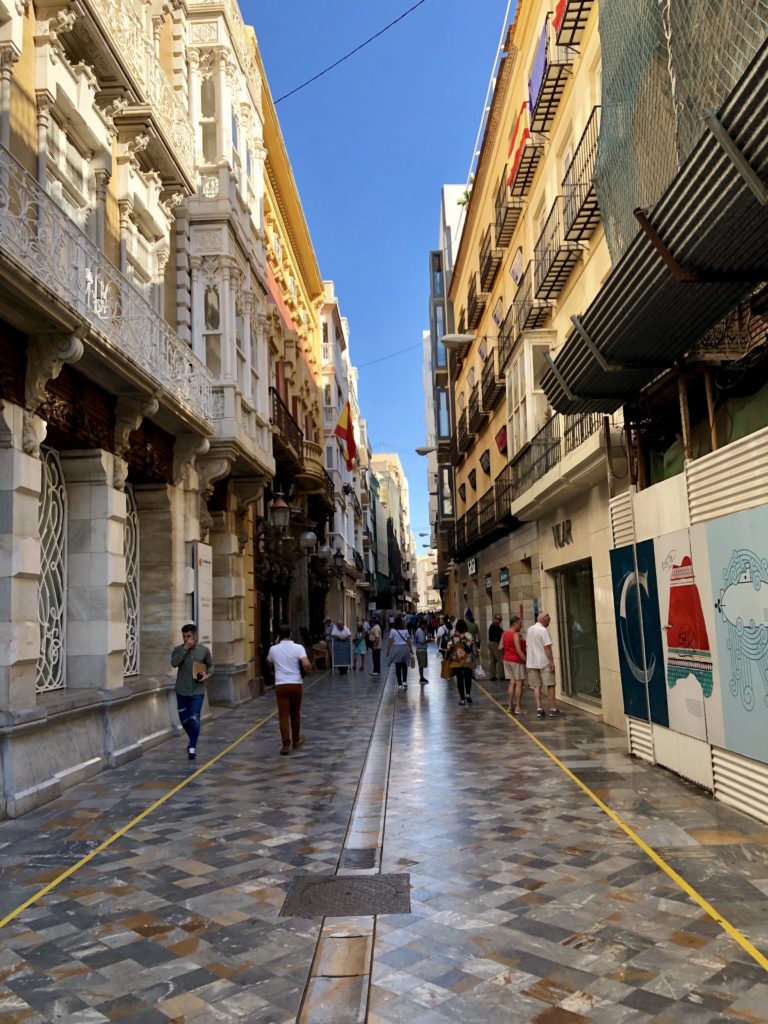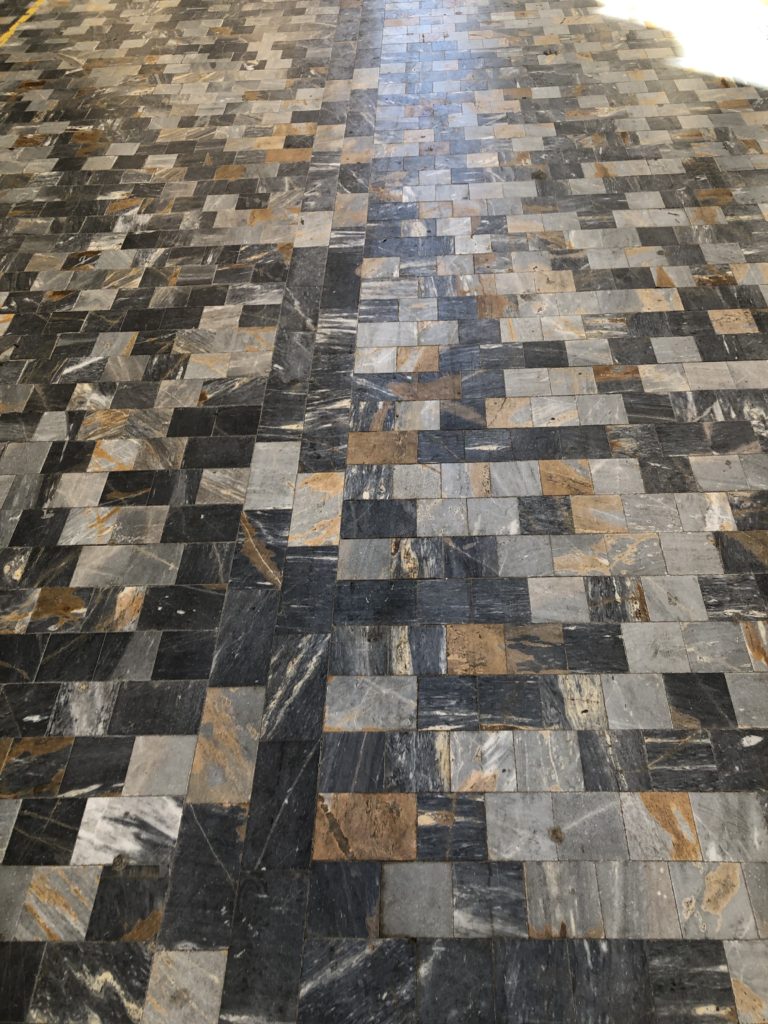Cartagena is another Spanish coastal city that is steeped in history. Founded in 220 B.C., it has a great deal of cultural significance to Spain’s history, and also plays a large part of Roman history. One of the major landmarks of Cartagena that we did at least walk by is their Roman Theatre. While the history is interesting, and it’s undoubtedly one of the major parts of Roman History for Spain, if you’ve been to actual Rome as we have, you may find it a little underwhelming.
Article Summary
Admittedly, JJ and I don’t have a ton to report about this destination or port though. We didn’t have much planned this day, as most major excursions offered by Norwegian were pretty far out of town and were quite expensive. There are castles and forts on far away hills that are beautiful even from the limited vantage point in the city. We should have pre-booked a tour most likely, but had missed the boat on that opportunity.
Calle Mayor
We chose to take a leisurely walk around the city in an attempt to get the lay of the land. Our ambitions consisted of nothing more than to seek out WiFi and maybe a nice Spanish coffee. There is one major pedestrian street in Cartagena that isn’t far from the cruise port called “Calle Mayor”. This seemed to be the main tourist-friendly area of the city, with endless restaurant and cafe options, as well as various shops. There was a single tourist office offering some tours, but none looked all that interesting to us.
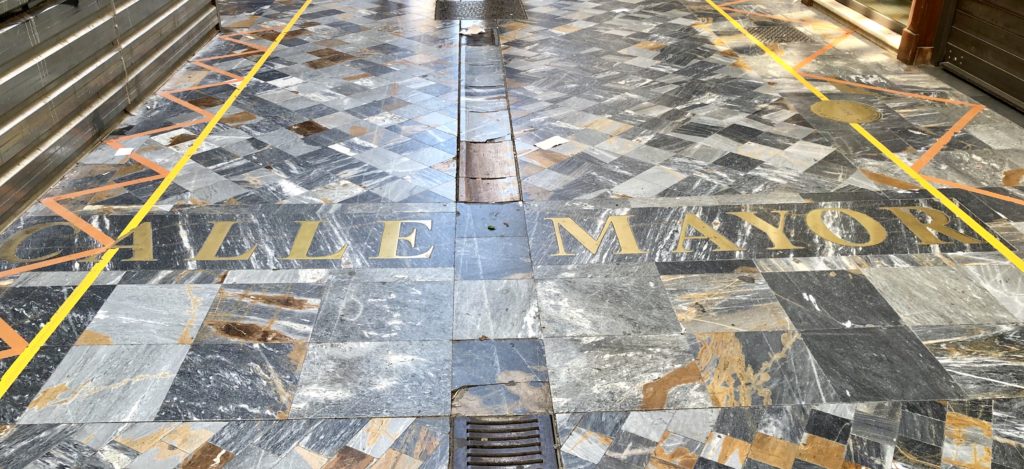
The Gran Hotel
Like most of Spain, there was no shortage of architectural eye candy, such as the Gran Hotel:
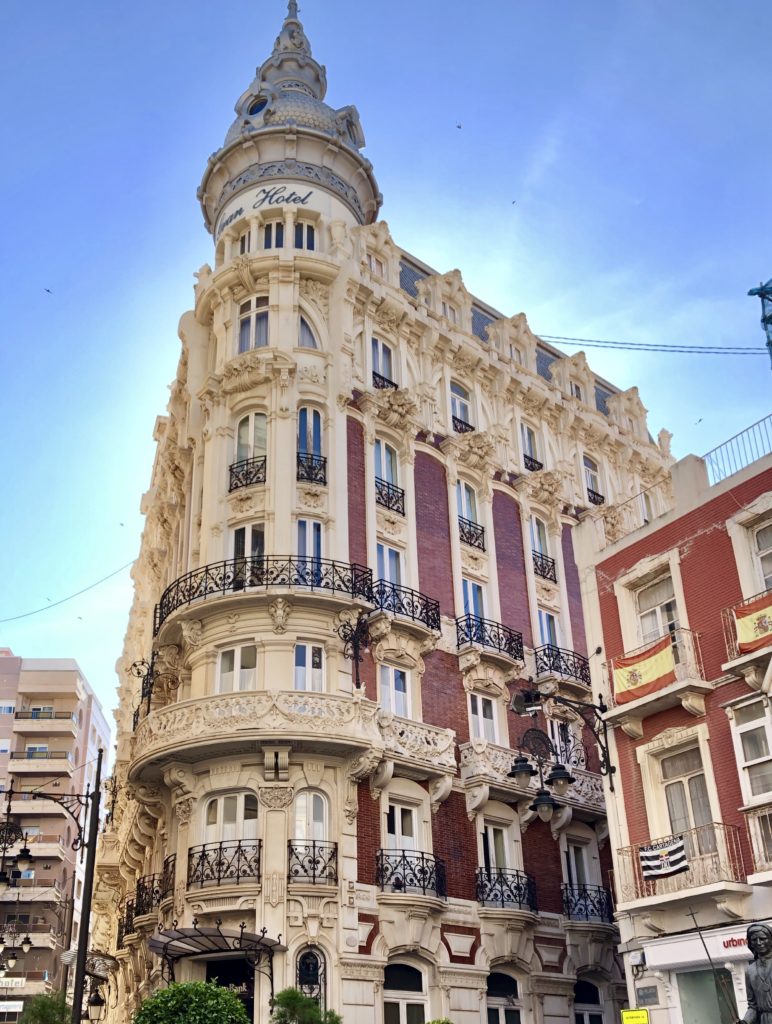
We learned that the Gran Hotel is in fact no longer a hotel, but is rather now a commercial building with a bank and various offices in it’s contents.
Iglesia del Carmen
We also liked the Iglesia del Carmen, especially the huge wooden doors JJ is standing in front of here:

We found very nice (and like most of Spain and one of our favorite things about this country, inexpensive) coffee at one of the cafe’s off Calle Mayor, but sadly their WiFi did not work, no matter what password we tried.
Disappointed, but undeterred by such first world problems, we ambled on. We stumbled upon a military museum that had a few tanks visible within, and the Roman Theatre as mentioned at the beginning of this article.
We eventually found another cafe on a much quieter area near the Plaza de San Francisco park area where the WiFi did indeed work. It gave us a chance to catch up on some work, and this blog.
Fuerte de Navidad
From the sailaway, we had a good view of the Fuerte de Navidad, which was an amazing fort atop one of the far away hills:
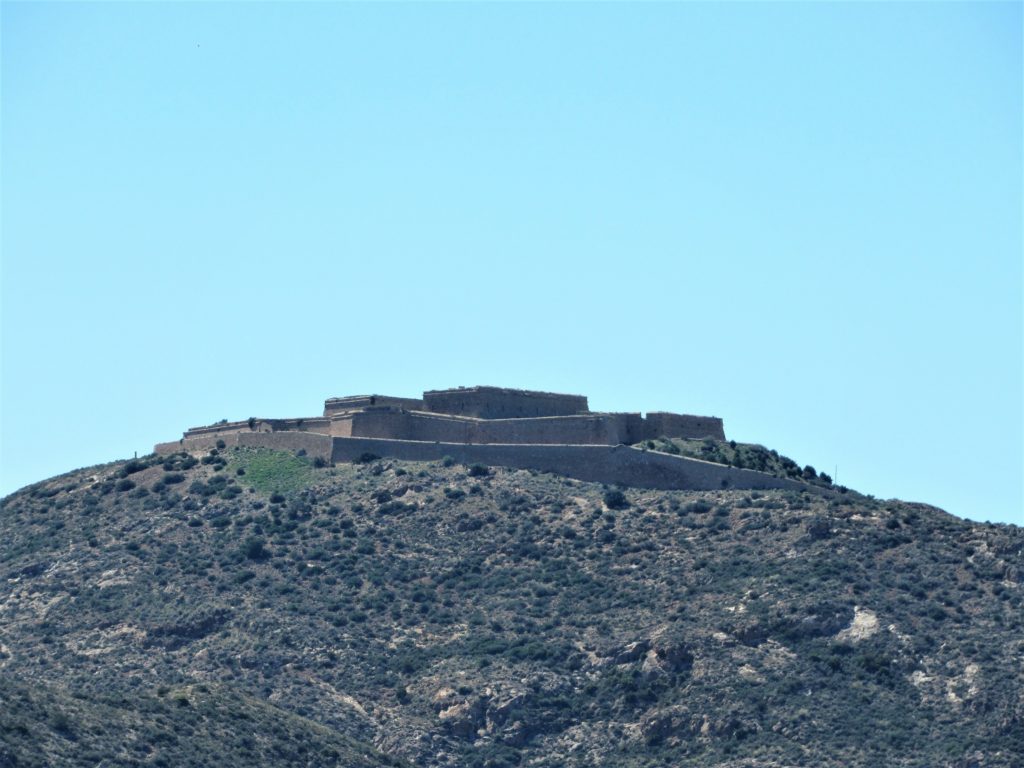
Len and JJ’s Overall Rating:
Not Worth Your Time
With a little more research, we’re sure Cartagena is a lovely place. Norwegian even claimed it’s one of the most visited cities in all of Spain each year. But for beach people like us, to be a truly coastal town, but have no real worthwhile infrastructure along the water like we saw in Malaga and Palma, we thought was a shame. And of course, no beaches anywhere in site and no where even close to walkable once we finally found WiFi and had a chance to search it. Wikipedia claims that Cartagena is the Spanish city with the most beaches, but none of them looked that spectacular to us, and none were within real walking distance of the cruise port.
Our advice, if you reach Cartagena as a cruise port like we did, with limited time, is either book an excursion through Trip Advisor / Viator, take a taxi to one of the further away beaches, plan a leisurely walking day with a chance to have a local meal off the ship, or if it’s a sunny day, just stay on the ship and enjoy the pool.
Our Site may include some Affiliate Links sprinkled in amongst our completely free, and hopefully helpful content. That means we earn a small commission when you purchase or book something (at no additional cost whatsoever) through our links. It’s like a beautiful “thank you” to Len and JJ and it doesn’t cost you anything! We’ll probably spend it on chocolate or a Thai massage.

